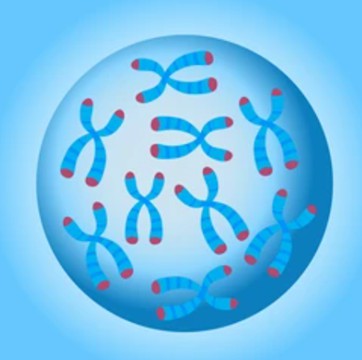Localization Analysis of Plant Telomeres

Telomeres are nucleoprotein structures that cap the ends of linear eukaryotic chromosomes. Almost all plant telomeres contain a characteristic hexanucleotide, TTTAGGG, repeated in a tandem array that extends for several kilobases. Localization analysis of plant telomeres involves studying their distribution and organization within the nucleus. Studying the localization analysis of plant telomeres provides valuable insights into their biology and functioning.
Lifeasible, a renowned biological company with extensive expertise in plant research, offers a range of cutting-edge techniques and services for the localization analysis of plant telomeres. Our team of highly skilled scientists is dedicated to providing innovative solutions to address the specific needs of researchers in this field.
- Lifeasible offers plant telomere-specific fluorescent staining, a powerful technique used to visualize and analyze the localization of telomeres in plant cells. This method involves the use of fluorescent probes that specifically bind to telomeric DNA sequences. The most used probe for plant telomere staining is the telomeric repeat sequence (TTTAGGG)n.
- We incorporate fluorescent dyes into the telomere-specific probe to visualize the telomeres under a fluorescence microscope. This staining technique enables the detection of telomeres at various developmental stages, providing valuable information regarding their dynamics and distribution.
- Importantly, we provide customized staining protocols and advanced image analysis tools. Our customized staining protocols can meet specific experimental requirements of scientific research, including variations in fixation methods, probe concentrations, and staining durations. Our advanced image analysis tools facilitate precise quantification and characterization of telomeres, providing information on telomere length, distribution, and localization within plant cells.
- Lifeasible employs plant telomere distribution analysis that involves characterizing telomere length distribution patterns of different chromosomes and cell types in plants. This analysis provides valuable information on the organization of telomeres during different stages of the cell cycle, cellular differentiation, and stress responses.
- We provide analysis services of plant telomere distribution patterns of different chromosomes. Certain chromosomes may possess distinct telomere organization and behavior compared to others. Additionally, we help our customers study the distribution of telomeres in different cell types, which is crucial for unraveling the mechanisms underlying cell differentiation and development in plants.
- We utilize various techniques to study telomere distribution, including fluorescence in situ hybridization (FISH) and quantitative immunofluorescence microscopy. FISH involves using fluorescently labeled probes that specifically bind to telomeric DNA sequences, allowing for the visualization of telomeres within the nucleus. Quantitative immunofluorescence microscopy, on the other hand, utilizes specific antibodies against telomeric proteins to assess telomere distribution.
Lifeasible adheres to rigorous standards and ensures prompt delivery of results to facilitate efficient progress in plant telomere localization studies. If you are interested in our services or have some questions, please feel free to contact us or make an online inquiry.
For research or industrial raw materials, not for personal medical use!
